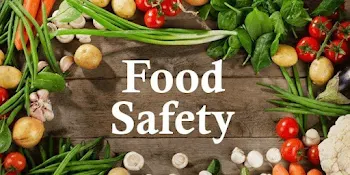Is plastic wrap safe? It's one of the vital inquiries in choosing how to wrap and safeguard food securely.
The most pervasive envelop by the kitchen is plastic wrap. Plastic Wrap was unintentionally found in 1933 at the Dow Synthetic Organization by a lab professional attempting to foster another dry-cleaning item. The material made was at first transformed into a fluid splash utilized on U.S. military aircraft and on auto upholstery. Dow later named the item Saran and directed further improvement to make the material suitable for a kitchen wrap, eliminating the foul smell and explaining the green shade of the first material. Cling Wrap hit the business market in 1949 and the family market in 1953.
Cling Wrap was initially made of slight film polymers utilizing polyvinylidene chloride (PVDC) containing phthalates, synthetic compounds used to build the wrap's adaptability. Tragically, it was found that phthalates can upset chemicals when drained into food and in this way are terrible for one's wellbeing. Phthalates have been connected to sensitivities, asthma and strange sperm quality in grown-up men.
Beginning around 2006, practically generally plastic wrap made in North America has been without phthalate. Yet, as phthalate was deliberately eliminated, producers presented another compound: a low-thickness polyethylene (LDPE), which contains the plasticizer diethylhexyl adipate (DEHA). DEHA is another potential endocrine disruptor, and despite the fact that there were worries that it could cause malignant growth, the World Wellbeing Association's Global Organization for Exploration on Disease inferred that there was insufficient proof to say that DEHA was cancer-causing.
As per Dow (the maker of the Saran items), the organization no longer purposes plasticizers, for example, phthalates or DEHA in its items. Likewise, it has removed chlorine from the exceptional envelop recipe by request to be all the more ecologically principled.
I don't suggest utilizing Cling Wrap or some other saran wrap straightforwardly on your food, particularly greasy meats or cheeses, considering that synthetic compounds from saran wrap all the more effectively filter out into fats and oils. If you have any desire to utilize plastic wrap, ensure your food has cooled prior to wrapping it. Then, at that point, place a layer of unbleached material paper over the food and a while later cover it with saran wrap.
The plastics business has a numbering framework that means the sort of synthetic used to make each type of plastic. Marks on every plastic holder are involved a number that is encircled by three bended bolts that structure a three-sided shape. A few types of plastic are more secure; others are known to filter synthetic compounds into food items. (A rundown of the business' classifications is seen as in Table 6.)
As a rule, items with a plastic code of 3 or V ought to be kept away from, for both of these codes can show that the item contains polyvinylchloride. Plastics that are numbered 2 and 4 are less harmful than different plastics, considering that they are made out of high-thickness and low-thickness polyethylene, separately. Plastic wraps with the number 5 are made out of polypropylene, and are likewise commonly thought to be more secure to utilize.
1 - PET (polyethylene terephthalate): Used to make plastic drink containers and some food bundling. This class of plastic might drain synthetics like DEHA.
2 - HDPE (high-thickness polyethylene): Utilized in milk compartments and plastic packs. This type is viewed as a more secure type of plastic than different classes.
3 - PVC (vinyl/polyvinyl chloride): Used to deliver some food wraps. This classification might possibly drain poisons.
4 - LDPE (low-thickness polyethylene): Found in recoil wraps, squeezable jugs, and plastic sacks. Considered less poisonous than different plastics.
5 - PP (polypropylene): Found in bottle tops, sacks, and food wraps as well as yogurt and margarine holders. Thought about perhaps of the most secure plastic.
6 - PS (polystyrene): Utilized for plastic utensils and Styrofoam bundling. May filter into food items.
7 - Others, like LEXAN, polycarbonate and BPA (otherwise known as bisphenol A) Normally layered or blended in with different plastics.
Aluminum foil is a valuable wrapping device, however ought to be utilized cautiously. Aluminum is a perceived neurotoxin and certain diseases and instances of barrenness have been related with aluminum poisonousness. Best on the off chance that you don't have aluminum foil straightforwardly contact your food, particularly acidic food sources, for example, cut tomatoes, pureed tomatoes, and citrus items like oranges and lemons. It has been shown that cooking food sources in aluminum foil causes draining of the metal into the food.1 All things being equal, cover the food first with unbleached material paper and afterward, over that, wrap it with aluminum foil.
Wax paper is a typical food wrap, however did you understand that most traditional brands of wax paper are covered with paraffin, an oil based good? Notwithstanding, there are wax papers available that utilization soybean wax, which is nontoxic. Assuming you like to utilize wax paper, it's ideal to select soybean-covered wax paper.
The subject of is plastic wrap safe is a significant one. My own decision for a food wrap is non-blanched material paper. Material paper is a superb food wrap, however know that there are two unique assortments: faded and non-blanched. The issue with blanched paper items overall — whether it's material paper, paper towels, or espresso channels — is that one of the side-effects of the dying system is dioxins, which are poisonous. Dioxins can undoubtedly filter into food from paper items, so assuming you decide to wrap your food or heat your food in material paper, search for the unbleached assortment. As a matter of fact, I'd suggest involving just unbleached paper items in your kitchen, particularly dribble espresso channels. Hot espresso going through a blanched channel can drain dioxins into the espresso, something simple to stay away from as there are numerous unbleached espresso channels ready to move.

